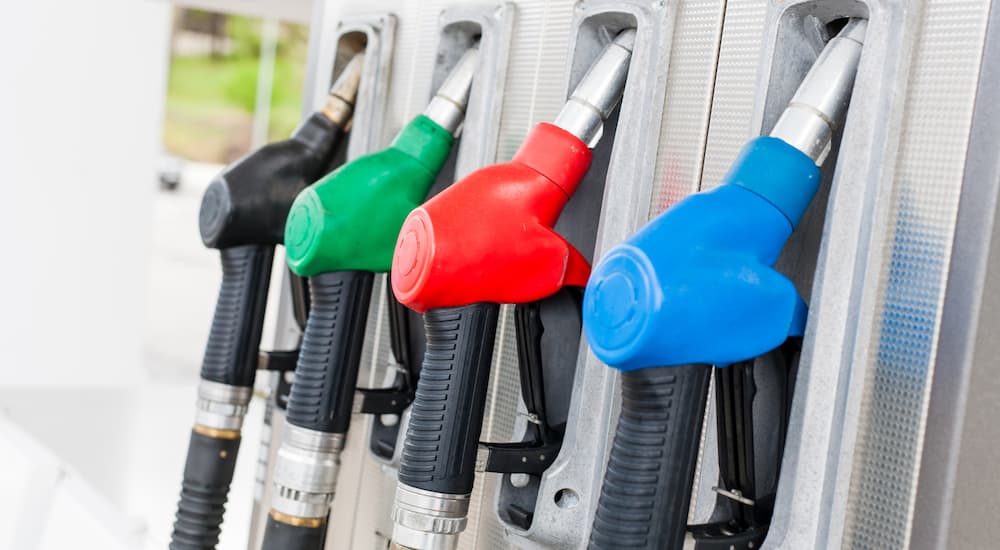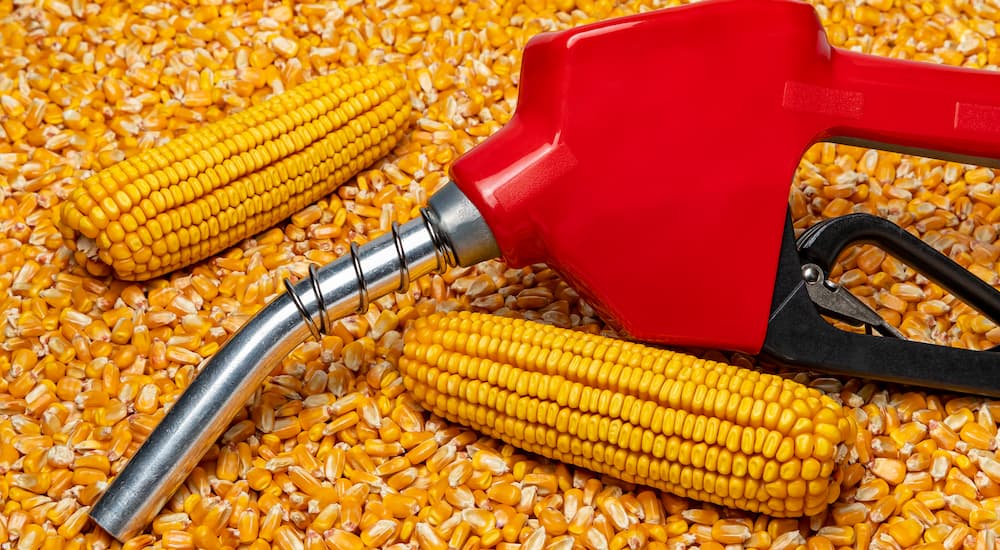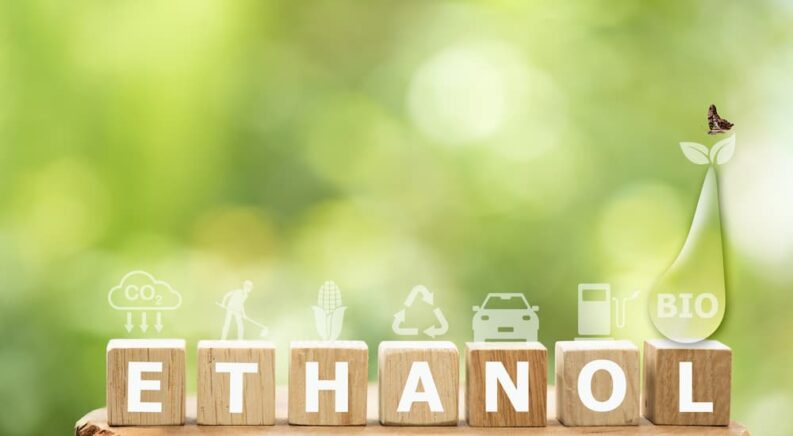Growing up, I only remember seeing two fuel options when my parents stopped at the pump: gas and diesel. When I stopped to fill up earlier this week, I realized that I had no fewer than five different handles staring back at me. My palms began to sweat. Which handle was the one I needed, and why were there so many?
Okay, maybe it wasn’t that dramatic, but it did get me thinking about how much fuel options have changed. Gone are the days of simply choosing between gas and diesel. Now we have options like E10, E15, and E85. Why do we need so many options, and do they make that much difference? Ethanol in gas has proven to be more than controversial in the past, but we’ll approach this with an open mind. If you prefer having nuts-and-bolts clarity about your car and what it needs, join us for a drive down Ethanol Road.
Decoding the “E”
The names are pretty straightforward. The “E” stands for Ethanol, a form of alcohol derived from the fermentation of sugars. Many different crops can be used for ethanol production, but corn is typically where those sugars come from in the US.
The number after the “E” gives us at least some idea of what percentage of the fuel is made of ethanol. E10 is 10% ethanol and 90% gasoline. Nearly every gas-powered vehicle is capable of running on it, and it’s what the majority of us run in our daily drivers. It became the standard thanks to policies like the 1990 Clean Air Act and the Renewable Fuel Standard of 2007.
Other ethanol blends are now available, too. E15 ranges from 10.5% to 15% ethanol, and is EPA-approved for light-duty vehicles manufactured in 2001 and forward. It’s often marketed as cheaper and cleaner, but stations must adhere to stricter regulations, making it less common in some areas. E85 is used exclusively for Flex Fuel vehicles. Depending on region or season, it can contain anywhere from 51% to 83% ethanol, and your car must be specifically equipped to run it.
Figuring out the best option for your vehicle is as simple as checking your owner’s manual or looking for the sticker near your fuel cap. But what difference does it make?

A Case for Corn
Policies like the Renewable Fuel Standard promote ethanol to decrease greenhouse gas emissions, increase domestic fuel security, and promote the US crop economy. Economic incentives are also a factor. During the Summer of 2025, the EPA issued an emergency waiver that allowed the sale of E15 to drive down fuel costs and promote Midwestern agriculture. Reports showed that E15 was, on average, ten cents per gallon less expensive than E10.
Cleaner emissions are created when ethanol burns compared to gasoline. A 2019 USDA study showed that ethanol fuel has the potential to cut greenhouse gas production by up to 43%. This isn’t just about the fuel itself. It’s about environmental effects, farming economics, and controlling consumer prices.
Performance increases are possible due to ethanol’s octane rating. It’s much higher than gasoline’s rating, which means it can decrease engine knocking and allow for more aggressive tuning. The octane boost allows you to punch up the performance without worrying about fuel ping, which is great if you’re running forced induction or have a big cam that requires aggressive engine timing. Tuners often praise E85 for its support for higher boost and more advanced timing while maintaining cooler combustion temperatures.
If performance isn’t a priority, and you would rather spend your drive time decreasing your carbon footprint, you can do that with the right tune as well. As carbon dioxide is released from the burning ethanol, the crops used to create ethanol recapture it and use it to grow. This is an angle that petroleum simply cannot match.
E15 is becoming increasingly available around the country, and it considerably undercuts the price of E10. Retail surveys show that 96% of cars on the road today can safely run E15, providing similar mileage to E10. Flex fuel drivers have a unique opportunity with E85. It allows them to run a high-octane fuel without paying race gas prices. If your tune is on point, it’s a budget-friendly way to unlock that extra horsepower.
When the Corn Gets Cracked
While the implementation of ethanol has benefits, it also brings challenges and downsides. Ethanol produces between 33% and 34% less energy per gallon, resulting in a noticeable drop in fuel economy, especially with E85. E10 impacts are small, around 1-3%. There is no appreciable difference between E10 and E15.
While ethanol provides noticeable decreases in harmful pollutants like CO2, some argue that the process of producing it washes away any benefit from using it. Materials like fertilizer and the pollutants of farming add up quickly. When you factor in the cost of greenhouse gases, land, and water pollution, the downsides of producing ethanol seem to cancel out the benefits.
You can find regular gas at any gas station, but E85 availability varies widely depending on several factors, primarily location. The further you get from the Midwest or larger cities, the more often you’ll find E85 pumps dry or absent altogether.
Ethanol absorbs water. Due to the added moisture, corrosion of certain metals, plastics, and rubbers is common. Small engines and older vehicles can suffer greatly from this. Flex-fuel vehicles have upgraded parts specifically designed to combat the adverse effects of the fuel’s additional ethanol content.

Corny Companions
Anyone looking for efficiency or convenience is probably best suited for E10. It’s the most available and much less hassle than its more corny counterparts. Although your fuel mileage may take a small hit, E10 is much better for emissions. If your car was manufactured in 2001 or later, E15 is generally safe to use. You’ll likely see no noticeable change in fuel mileage, but you’ll pay less at the pump. To be safe, I would still check your owner’s manual or look for a sticker to ensure the manufacturer approves.
Flex-fuel drivers or those seeking performance gains may find what they’re looking for in E85, as long as it’s available in their area. As long as you calibrate for the lower energy density and dial in your tune, you should be good to go for the road and the track. However, old-school classics, small engines used in lawn equipment or marine applications, and most motorcycles should probably avoid ethanol altogether. The possibility of corrosion from moisture or part failure due to incompatible materials is far too great to see any benefit.
A Kernel of Truth
I have several friends who have converted cars to E85 for one reason or another, and I have some personal experience with a couple of Flex Fuel models. The octane bump is very real, but it comes with the trade-off of more fuel stops and more limited station choices. E10 and E15 make fill-ups a little lighter on your wallet, but can cause bigger problems if your particular engine can’t burn it efficiently.
Like most automotive products, ethanol has advantages and disadvantages. Enthusiasts get a horsepower bump, daily commuters get lower prices at the pump, and environmentalists get to cut their emissions output. But ethanol is a tool, and it never claimed to be a cure-all. It delivers by boosting octane and the domestic economy, but the differences in energy density, compatibility, and adverse impacts on farming severely limit its “green” reputation. As a DIYer or tuner, it’s all about knowing the trade-offs. If you can grasp that, it’s a real flex at the pump.

